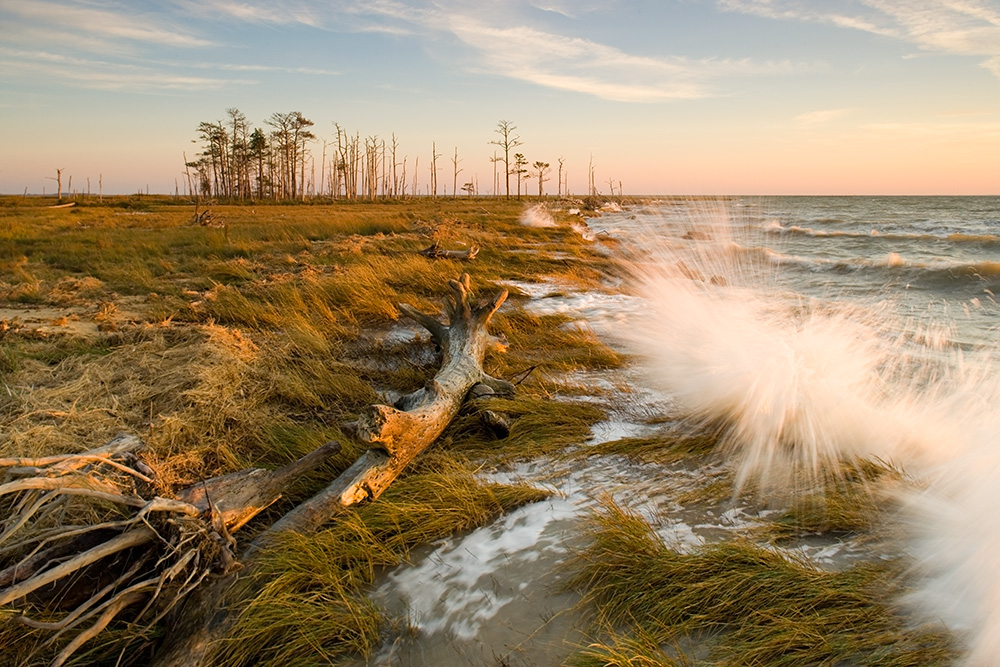For the Second Year in a Row, the Obama Administration’s Budget Provides Significant Funding for Land Conservation in the Chesapeake Bay Watershed
The President’s Fiscal Year 2017 Budget Includes $29 Million for Land Conservation Across the Chesapeake Bay Watershed

Annapolis, MD – Today, the Chesapeake Conservancy applauded the Obama Administration for including $29 million in the Fiscal Year 2017 budget to fund land conservation across the Chesapeake Bay watershed. The proposed budget would provide funding through the Land and Water Conservation Fund to protect significant wildlife habitat and historical sites in Maryland and Virginia. It will be up to the Congress to ensure that the funds for all of these projects are appropriated.
A significant driver for the Chesapeake’s listing in the President’s budget was the Rivers of the Chesapeake Collaborative Land and Water Conservation Fund (LWCF) proposal. The Chesapeake Conservancy served as a lead nonprofit partner in this proposal, which focuses on the great rivers of the Chesapeake Bay; the Potomac, Rappahannock, James, York, Nanticoke, and Susquehanna Rivers and their watersheds.
Fiscal Year 2017 will be the second year in a row that the President’s budget has included significant funding for land conservation in the Chesapeake region. Following House & Senate votes in December, the federal budget for 2016 included nearly $11 million for land conservation in the Chesapeake and $2 million for supporting a range of public access and conservation efforts along the Captain John Smith Chesapeake National Historic Trail through the National Park Service’s Chesapeake Bay Gateways and Watertrails Program.
“We applaud President Obama for his Administration’s continued support of conservation in the Chesapeake,” Chesapeake Conservancy President and CEO Joel Dunn said. “I believe that the Chesapeake is as beautiful and precious to our nation as the Grand Canyon, Yellowstone, or Yosemite, and its future demands a lasting commitment to protecting our great rivers and special places before they disappear forever.”
The Rivers of the Chesapeake collaborative was a bipartisan proposal with resounding support from five governors, including Governors Terry McAuliffe (VA), Larry Hogan (MD), Tom Wolf (PA), Jack Markell (DE), and Earl Ray Tomblin (WV). Additionally, seven U.S. Senators, 17 U.S. Representatives, Maryland Senate President Thomas V. Mike Miller, Jr., Maryland House Speaker Michael Busch, Virginia House Speaker William Howell, and more than 40 nonprofits and American Indian Tribes and Nations expressed their support for the collaborative proposal. Critical to the proposal is the concept that all partners will work together and contribute resources to achieve a larger conservation impact.
“We are grateful for the bipartisan support of U.S. representatives, senators, and governors as we worked to garner support for this funding in the President’s budget, in partnership with numerous states agencies, non-profit organizations, and American Indian tribes and Nations,” Dunn said. “This is the culmination of many years of effort by and collaboration with our many partners, especially the National Park Service, U.S. Fish and Wildlife Service, Bureau of Land Management and U.S. Forest Service.”
Under the proposed budget, the National Park Service, U.S. Fish and Wildlife Service, Bureau of Land Management, and U.S. Forest Service will receive money to conserve key lands that celebrate our region’s history, provide recreational opportunities, create connected corridors, conserve wildlife habitat for iconic Chesapeake Bay species, protect scenic views, and safeguard irreplaceable landscapes. Projects were identified in partnership with the state and local organizations.
“With the regions’ human population approaching 18 million and growing, and tens of thousands of acres of open space vanishing each year, the Administration’s commitment to large landscape conservation in the Chesapeake could not come at a better time,” Dunn said. “By acquiring land in key places, federal agencies can protect critical wildlife habitat and nationally significant cultural resources, and enhance the watershed’s natural ability to filter out sediments and nutrients before they reach the Bay.”
“This is great news and another important step for people who love the Chesapeake,” REI spokesman, Mike Ferris, said. “The REI community is passionate about living a life outdoors, and we are committed to stewarding and increasing access to outdoor recreation in the Chesapeake.”
Land conservation and public access are critical components of the Bay restoration and protection strategy. In 2009, President Obama committed to preserving the Chesapeake Bay when he signed Executive Order 13508. The implementation strategy designed to accomplish the Order’s goals includes protecting an additional two million acres and creating 300 new public access sites by 2025. These goals were adopted into the new Chesapeake Bay Watershed Agreement, signed in 2014 by the Governors of six states, Washington D.C. Mayor, the Chesapeake Bay Commission and the Federal Government.
Although there is still work to be done, progress has been made on increasing public access, thanks to funding from Congress for the Chesapeake Bay Gateways program and the leadership of the Chesapeake Bay Office of the National Park Service, in partnership with the Chesapeake Conservancy, local nonprofits and the watershed states. Public access – such as new kayak access sites at pocket parks along the John Smith Chesapeake Trail — allows the public to connect with the resource, enhancing outdoor recreation opportunities for all.
The President’s Fiscal Year 2017 Budget dedicates this funding through the Land and Water Conservation Fund, which is proposed for full funding. Created by Congress in 1964, the Land and Water Conservation Fund uses royalties from the offshore production of oil and natural gas to provide money to federal, state, and local governments to conserve land, water, and wetlands for the benefit of all Americans.